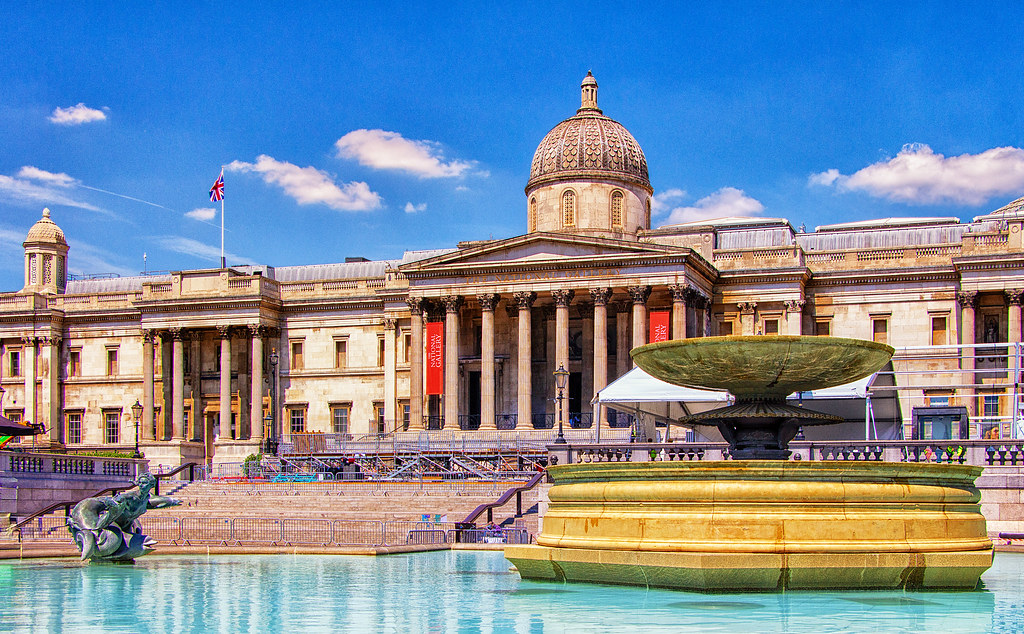Trafalgar Square, an iconic landmark in the heart of London, captivates visitors with its grandeur, rich history, and captivating seasonal festivities. Stretching across six acres, it is a vibrant gathering place that embodies the city’s vibrant spirit and allure. From its origins as a tribute to a national hero to its present-day role as a beloved public space, Trafalgar Square has evolved into a must-visit destination for tourists and locals alike.
Trafalgar Square

Located in the City of Westminster, Trafalgar Square is a bustling hub of activity surrounded by some of London’s most famous landmarks, including the National Gallery, St. Martin-in-the-Fields church, and the Admiralty Arch. It is also a popular meeting point for locals and a popular spot for street performers, making it a lively and dynamic space.
The History of Trafalgar Square
The origins of Trafalgar Square can be traced back to the early 19th century. Following the British victory over the combined French and Spanish fleets at the Battle of Trafalgar in 1805, Admiral Lord Nelson was hailed as a national hero. To commemorate his triumph and honor the valiant sailors who had fallen, a monument was commissioned to adorn the center of the newly designed square.
The square was designed by Sir Charles Barry, who also designed the Houses of Parliament. The layout of the square was inspired by the Piazza San Marco in Venice, featuring an open central space surrounded by imposing structures. The construction took nearly 20 years to complete, with the final triumphal column erected in 1843.
During the Victorian era, Trafalgar Square became a center for political rallies and demonstrations. It also witnessed the unveiling of the famous statue of King George IV in 1843 and the magnificent fountains in 1845. Over time, the square evolved into a beloved public space, hosting concerts, festivals, and other events that brought the city together.
The Trafalgar Square Christmas Tree
One of the most beloved traditions at Trafalgar Square is the annual Christmas tree lighting ceremony. Every year since 1947, the people of Norway have gifted a giant Christmas tree to the people of London as a symbol of gratitude for their support during World War II. The tree is usually around 20 meters tall and is adorned with lights and decorations.
The lighting ceremony is a festive event that attracts crowds of people who come to witness the tree being lit up for the first time. It is a beautiful sight to see the tree standing tall against the backdrop of the National Gallery and the bustling streets of London. The tree remains lit throughout the holiday season, adding to the magical atmosphere of Trafalgar Square.
The Trafalgar Square Pronunciation
As a popular tourist destination, Trafalgar Square has been mispronounced by many visitors over the years. The correct pronunciation is “TRUH-fal-gar” with the emphasis on the first syllable. However, it is not uncommon to hear variations such as “tra-FAL-gar” or “tra-fal-GAR.” Locals may also refer to it simply as “Trafalgar,” dropping the word “Square” altogether.
Regardless of how you pronounce it, Trafalgar Square remains a must-visit destination for anyone visiting London. Its rich history, stunning architecture, and lively atmosphere make it a truly unique and unforgettable experience.
Conclusion

In conclusion, Trafalgar Square is more than just a square in the heart of London. It is a symbol of the city’s resilience, a tribute to a national hero, and a vibrant gathering place that brings people together. From its grand monuments and fountains to its lively events and traditions, Trafalgar Square is a must-visit destination that truly captures the wonders of London. So next time you find yourself in the city, be sure to make a stop at this iconic landmark and experience all it has to offer.


